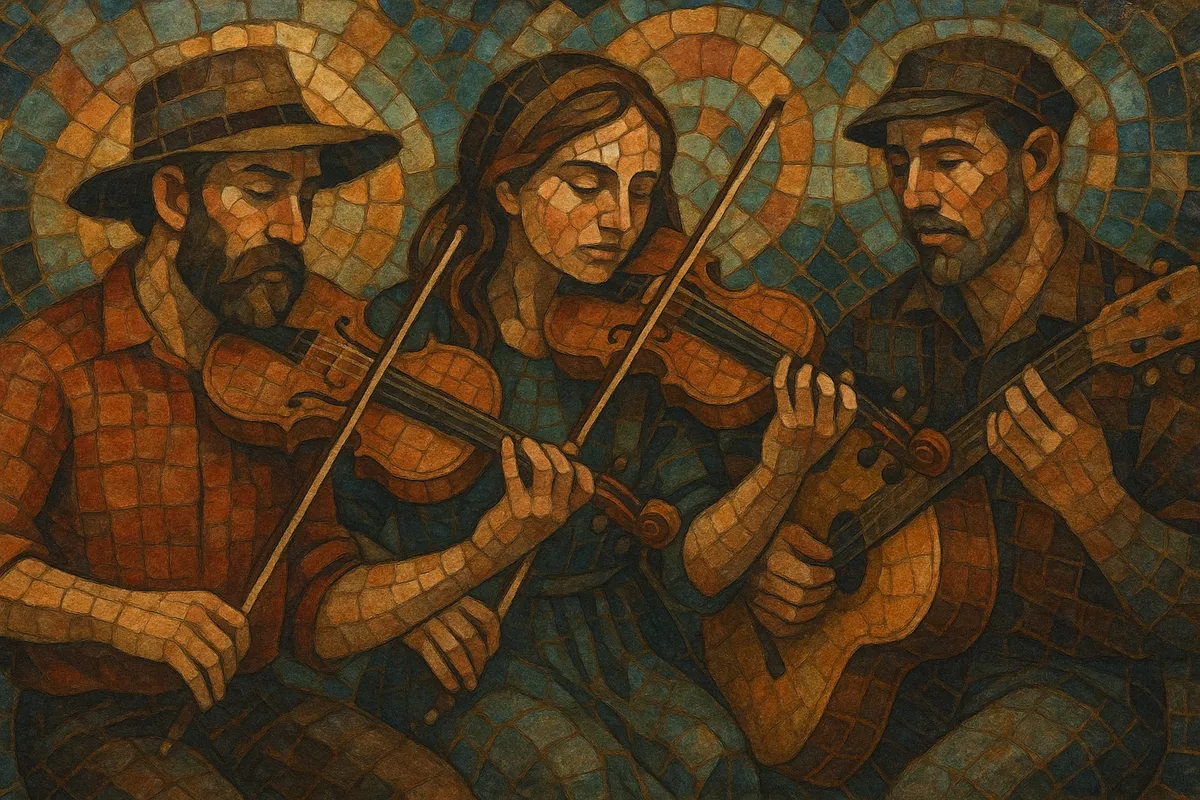Contra is a dance-driven folk music tradition associated with contra dancing, a community-oriented social dance form that evolved in New England from English country dance and French contredanse.
Its core repertoire is instrumental and tune-based, favoring 32-bar AABB jigs (6/8) and reels (2/2 or 4/4) played at steady, danceable tempos. Fiddle carries the melody; piano and/or guitar provide a strong rhythmic and harmonic engine, often with a pronounced backbeat and bass runs that support clear phrasing for dancers.
The style blends Irish, Scottish, English, old-time Appalachian, and French‑Canadian/Québécois fiddle-tune traditions. Contemporary bands may incorporate mandolin, accordion, flute/whistle, banjo, cello, bass, and light drums, and some groups experiment with jazz, rock, and global influences while preserving the phrasing that matches the dance figures.
Contra music emerged in New England in the late 1700s, drawing directly from English country dance and the French contredanse. Its musical backbone consisted of reels and jigs imported and adapted from Irish and Scottish traditions, played on fiddle with a strong, regular pulse to match progressive longways dance sets. Through the 1800s, local New England styles formed, adding piano accompaniment and a regional repertoire of tunes.
As tastes shifted toward ballroom, square dancing, and later swing, contra’s popularity declined in many places. Nevertheless, dedicated tradition-bearers and organizers kept the music and dance alive, especially in New England. Collectors, callers, and musicians documented repertoire, codified phrasing, and maintained the link between musical structure and dance figures.
The broader folk revival rekindled interest in social dance and fiddle music. Community dances, camps, and festivals (e.g., Pinewoods, NEFFA) nurtured a new generation of players. Bands began expanding instrumentation and arranging, while callers emphasized accessibility for newcomers. By the 1980s–1990s, energetic ensembles and touring circuits spread contra across the United States and into Canada and parts of Europe.
Modern contra bands honor classic AABB forms and dance tempos while exploring richer harmonies, groove-oriented piano styles, syncopated guitar backup, bass lines, and occasional percussion. Some groups blend in elements from jazz, rock, and world folk, creating a lively spectrum from traditional New England sounds to "contra-fusion." Despite innovations, the defining priority remains: clear phrasing, steady tempo, and lift for dancers guided by a caller.


